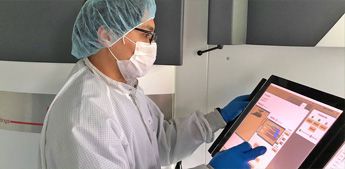featured publications – For the first time the AMO group made a comparison between magnetron sputtering and ion beam sputtering on dispersive mirrors (DM). DMs exploited as intra-cavity and extra-cavity dispersion compensation components have been widely used in all kinds of ultrafast laser systems and become the key elements to control dispersion in ultrafast laser systems.
One of the compared mirrors was a broadband DM which is known as double angle DM, providing a group delay dispersion (GDD) of -40 fs2 in the range of 550 nm to 1050 nm. The other one was a robust highly dispersive mirror, which provides a GDD of about -275 fs2 at 800 nm and covers the wavelength range from 690 nm to 890 nm.
Broadband dispersive mirrors (BBDMs) and high dispersive mirrors (HDMs) are the two mostly used DMs. Magnetron sputtering (MS) and ion beam sputtering (IBS) are the most widespread coating processes for manufacturing DMs. However, there is no study about comparisons of MS-produced and IBS-produced DMs, especially for the two widely used DMs (BBDMs and HDMs). In the new work of the AMO group, the design, production and characterization of (i) double angle DMs (BBDMs covering one octave) and (ii) HDMs were demonstrated.
Original publication:
"Comparison of magnetron sputtering and ion beam sputtering on dispersive mirrors " (Applied Physics B 126, 82 (2020))
